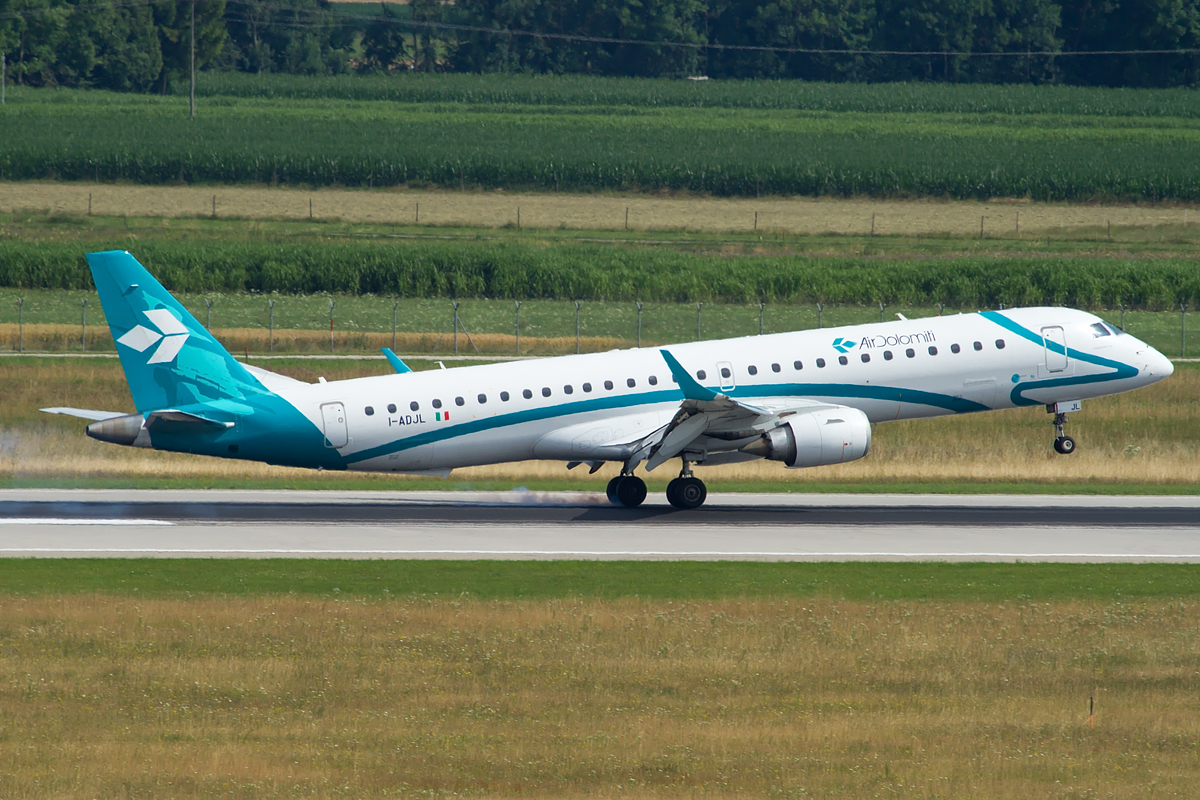
Assistance
Click to start searching
 The “crab”, which refers to how crabs walk sideways, consists of levelling the wings and keeping the nose upwards slightly upwind. In normal wind conditions, to get from A to B you just need to point the nose of the aircraft towards B. With a crosswind, let’s say coming from the right, you need to head towards the right of B and let the wind, combined with the aeroplane’s movement within the air mass, take the aircraft to B. It’s a stable landing manoeuvre that causes no distress for passengers.
The second technique, known as “de-crab”, is used for aircrafts with the dimensions of our Embraer 195. The objective is to align the aircraft with the runway centre line just before landing contact, which is achieved by operating the rudder and eliminating the crab angle used during approach. It’s a delicate manoeuvre as eliminating the crab angle means that the aircraft is subject to crosswind push, moving it leeward, thus losing the intended alignment. That’s why the de-crab technique is only used immediately before landing contact.
The third technique is “one wing low” and has been used since biplanes were first introduced, but it’s not all that common these days. Eliminating the crab angle before contact, the leeward wing needs to be lowered to avoid the aircraft drifting leeward. This technique requires cross-control of the commands, whereby the rudder is used to align the axis of the aircraft with the landing direction, acting on the ailerons simultaneously and in the opposite direction in order to avoid drifting leeward. For example, with the wind coming from the right, the crab angle to the right would allow the aircraft to cover the intended trajectory toward the runway: eliminating the crab angle with the left rudder, the pilot needs to act on the right aileron to avoid the aircraft moving to the left and thus losing its alignment with the runway centre line. Et voilà!
The prowess of our pilots is the most fascinating part of any windy landing. They’re always ready to leave behind the comfort of automated landing to take over manual control, ensuring passenger comfort and maintaining stability in case of gusts of wind, far more insidious than a predictable constant wind.
(Photo credits @PSC - Piti Spotter Club)
The “crab”, which refers to how crabs walk sideways, consists of levelling the wings and keeping the nose upwards slightly upwind. In normal wind conditions, to get from A to B you just need to point the nose of the aircraft towards B. With a crosswind, let’s say coming from the right, you need to head towards the right of B and let the wind, combined with the aeroplane’s movement within the air mass, take the aircraft to B. It’s a stable landing manoeuvre that causes no distress for passengers.
The second technique, known as “de-crab”, is used for aircrafts with the dimensions of our Embraer 195. The objective is to align the aircraft with the runway centre line just before landing contact, which is achieved by operating the rudder and eliminating the crab angle used during approach. It’s a delicate manoeuvre as eliminating the crab angle means that the aircraft is subject to crosswind push, moving it leeward, thus losing the intended alignment. That’s why the de-crab technique is only used immediately before landing contact.
The third technique is “one wing low” and has been used since biplanes were first introduced, but it’s not all that common these days. Eliminating the crab angle before contact, the leeward wing needs to be lowered to avoid the aircraft drifting leeward. This technique requires cross-control of the commands, whereby the rudder is used to align the axis of the aircraft with the landing direction, acting on the ailerons simultaneously and in the opposite direction in order to avoid drifting leeward. For example, with the wind coming from the right, the crab angle to the right would allow the aircraft to cover the intended trajectory toward the runway: eliminating the crab angle with the left rudder, the pilot needs to act on the right aileron to avoid the aircraft moving to the left and thus losing its alignment with the runway centre line. Et voilà!
The prowess of our pilots is the most fascinating part of any windy landing. They’re always ready to leave behind the comfort of automated landing to take over manual control, ensuring passenger comfort and maintaining stability in case of gusts of wind, far more insidious than a predictable constant wind.
(Photo credits @PSC - Piti Spotter Club)